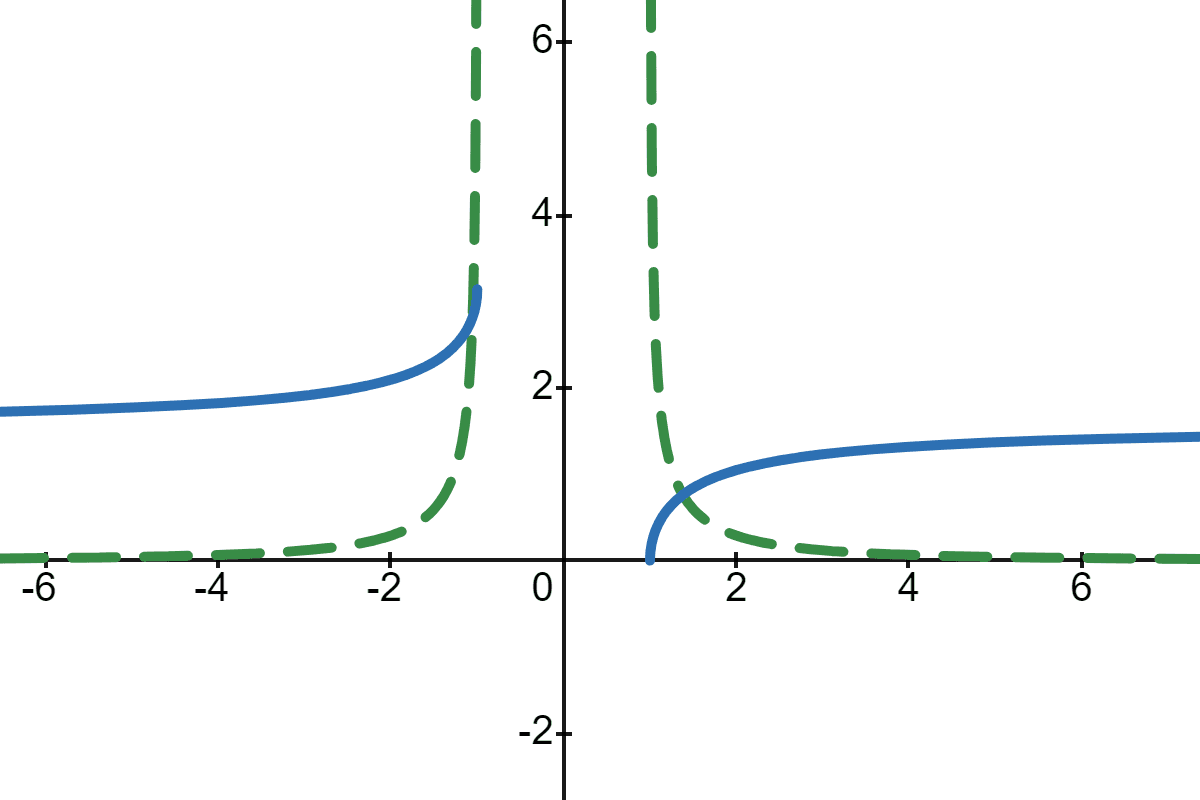Look at this unit circle:
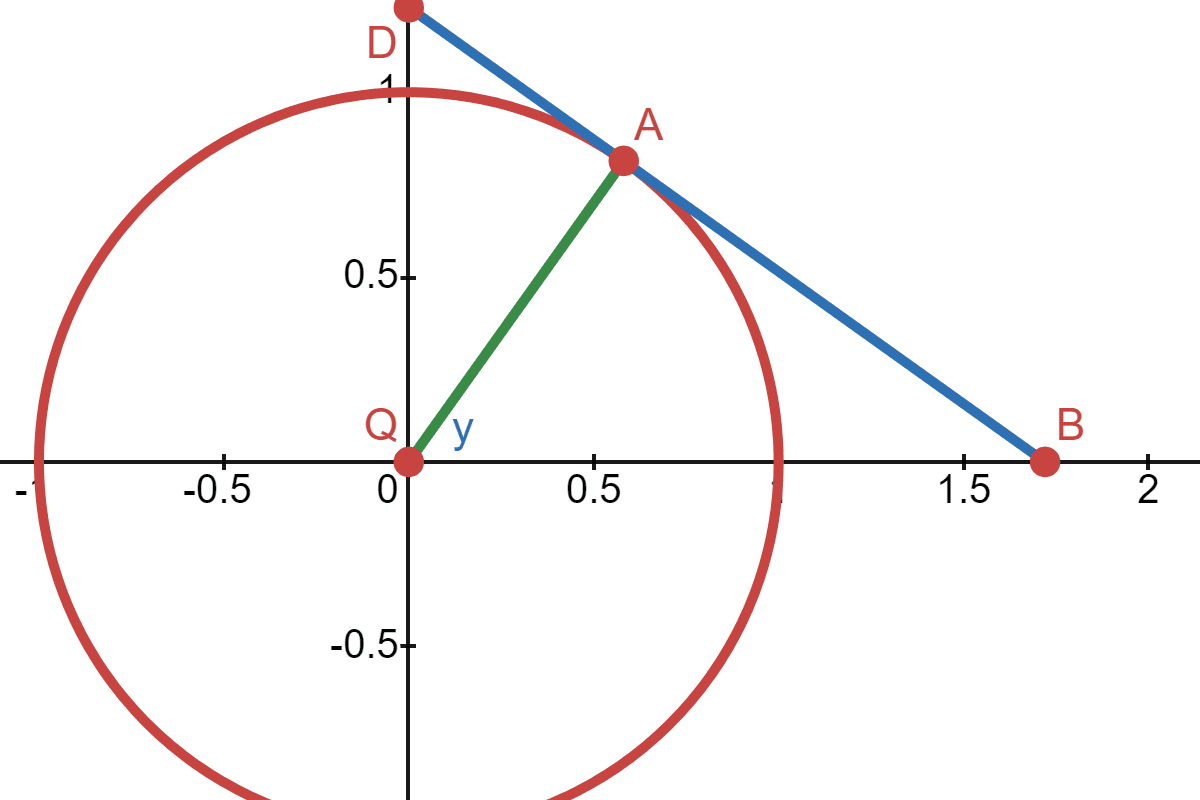
Let \(x\) be the distance from point \(Q\) to \(B\) (which would be negative if on the other side), and let \(y\) be the angle between the line \(\overline{QA}\) and the x-axis.
Let \(\operatorname{arcsec}(x) = y\). The range of arcsec(x) is \([0,\pi/2) \cup (\pi/2,\pi]\). If \(y\) is a number within this range, then:
\[ \begin{align} \sec(y) &= x \\ \tan(y) &= ±\sqrt{x^2 -1} \end{align}\]
Whether tan(y) would be positive or negative depends on the sign of \(x\). In other words, whether \(\overline{QB}\) is on the right or the left of the y-axis:
\[ \tan(y) = \left( \frac{|x|}{x} \right) \left| \sqrt{x^2 -1} \right| \]
As for the derivative of arcsec(x), let's start with:
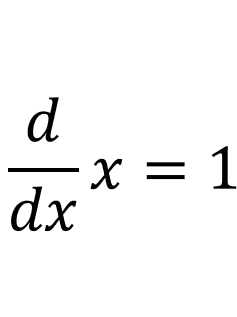
Since x = sec(y):
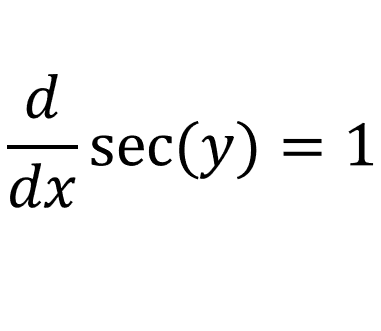
Using the chain rule:
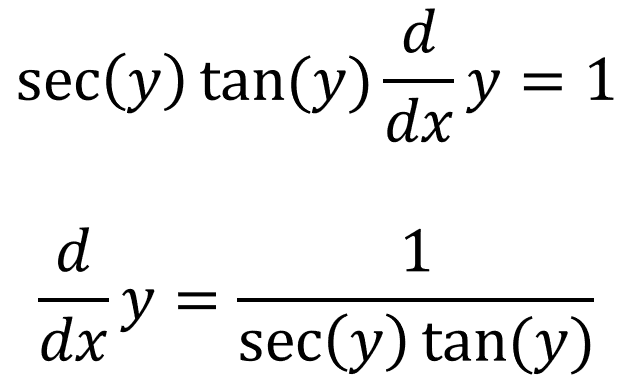
And we already know what sec(y) and tan(y) is equal to:
\[ \frac{d}{dx} y= \frac{1}{ x \left( \frac{|x|}{x} \left| \sqrt{x^2-1} \right| \right)} = \frac{1}{ |x| \left| \sqrt{x^2-1} \right| } \]
Below is the graph of the derivative (green) and arcsec(x) (blue):
